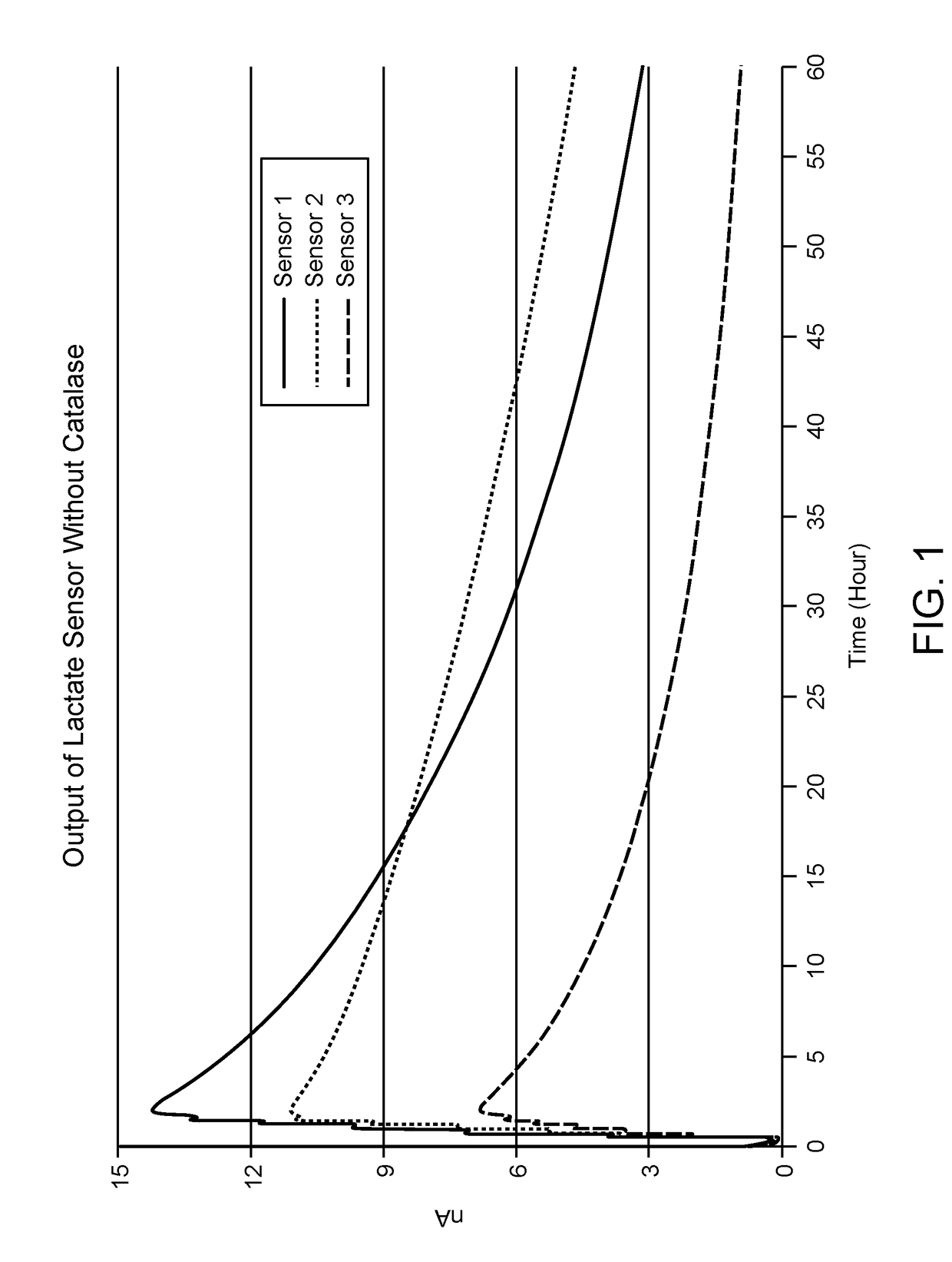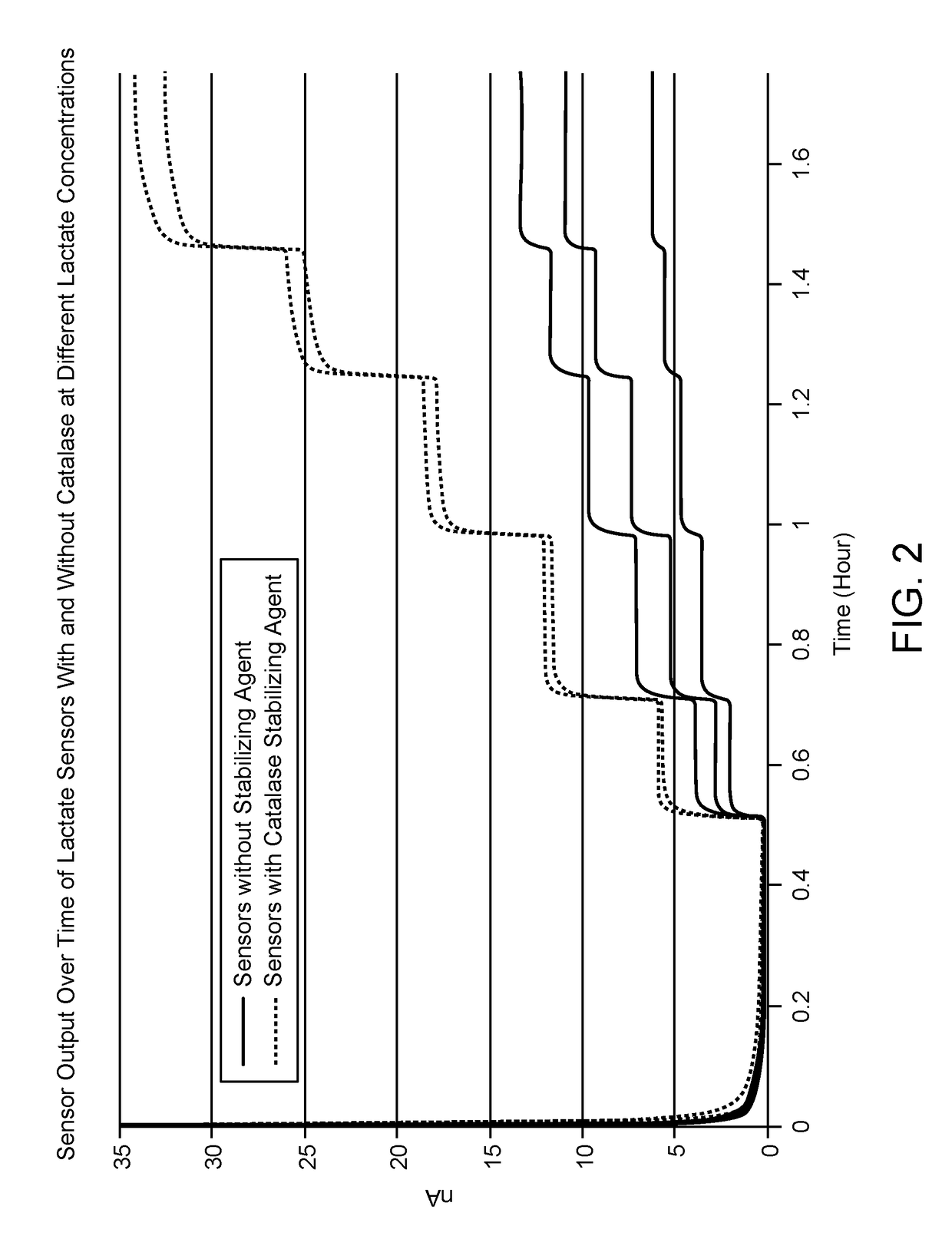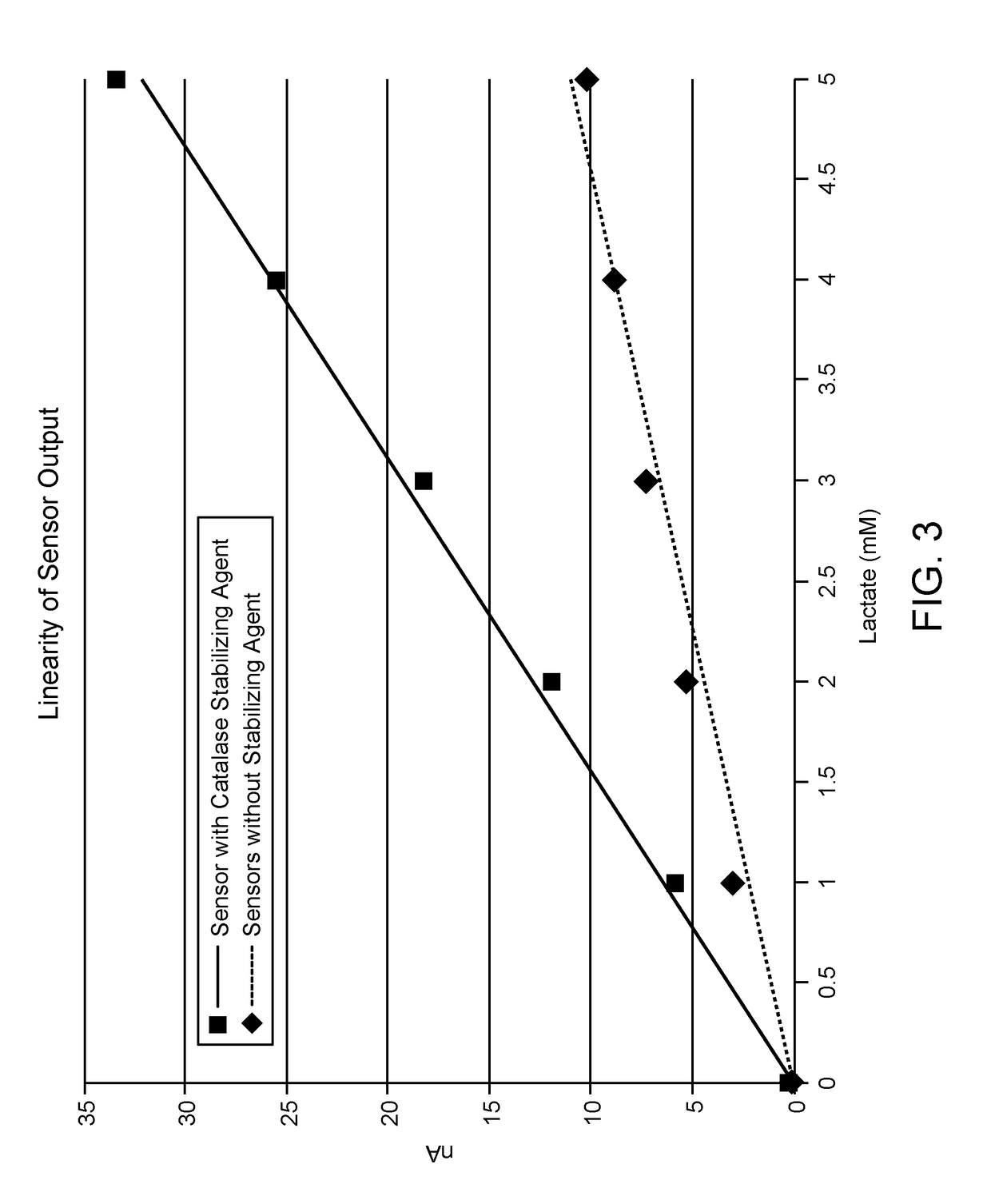Stabilized lactate responsive enzymes, electrodes and sensors, and methods for making and using the same
a technology of lactate responsive enzymes and electrodes, applied in the field of stabilized lactate enzymes, electrodes and sensors, can solve the problems of no efficient and effective monitoring method of lacta
- Summary
- Abstract
- Description
- Claims
- Application Information
AI Technical Summary
Benefits of technology
Problems solved by technology
Method used
Image
Examples
example 1
[0061]Experiments were performed to demonstrate the performance of lactate oxidase sensors in the presence and absence of catalase. Lactate sensors were prepared by depositing onto the surface of an electrode a reagent composition having lactate oxidase, and a polymer bound osmium-transition metal catalyst and a difunctional crosslinker, as shown by the scheme below:
[0062]The lactate sensors were tested in phosphate buffer containing 5 mM lactate at 33° C.
[0063]
under 1% oxygen. The temperature was controlled by a water circulated system with a digital temperature controller.
[0064]FIG. 1 shows the stability of sensor signal output over the course of 60 continuous hours for three different lactate sensors that include enzyme compositions having lactate oxidase, a polymer bound transition metal complex and a crosslinker. As shown in FIG. 1, the lactate sensors began to exhibit a drop in sensor output after 3 hours of use and showed a significant and continuous decrease in signal output...
example 2
[0065]Experiments were performed to compare the performance of lactate sensors with and without catalase with the lactate oxidase composition. Sensors lacking stabilizing agent were prepared as described above in Example 1. Sensors with enzyme compositions which include catalase were prepared by depositing onto the surface of an electrode a reagent composition having lactate oxidase, the stabilizing agent catalase, and a polymer bound osmium-transition metal catalyst and a difunctional crosslinker, as shown by the scheme below:
[0066]
[0067]Each lactate sensor was tested in phosphate buffer containing lactate at 33° C. under 1% oxygen. The temperature was controlled by a water circulated system with a digital temperature controller.
[0068]FIG. 2 shows the signal output from each sensor during calibration studies which illustrates sensor response to stepwise changes in the concentration of lactate from 1 mM to 5 mM. Lactate sensors lacking catalase exhibited a smaller signal response to...
PUM
| Property | Measurement | Unit |
|---|---|---|
| area | aaaaa | aaaaa |
| area | aaaaa | aaaaa |
| area | aaaaa | aaaaa |
Abstract
Description
Claims
Application Information
 Login to View More
Login to View More - R&D
- Intellectual Property
- Life Sciences
- Materials
- Tech Scout
- Unparalleled Data Quality
- Higher Quality Content
- 60% Fewer Hallucinations
Browse by: Latest US Patents, China's latest patents, Technical Efficacy Thesaurus, Application Domain, Technology Topic, Popular Technical Reports.
© 2025 PatSnap. All rights reserved.Legal|Privacy policy|Modern Slavery Act Transparency Statement|Sitemap|About US| Contact US: help@patsnap.com



